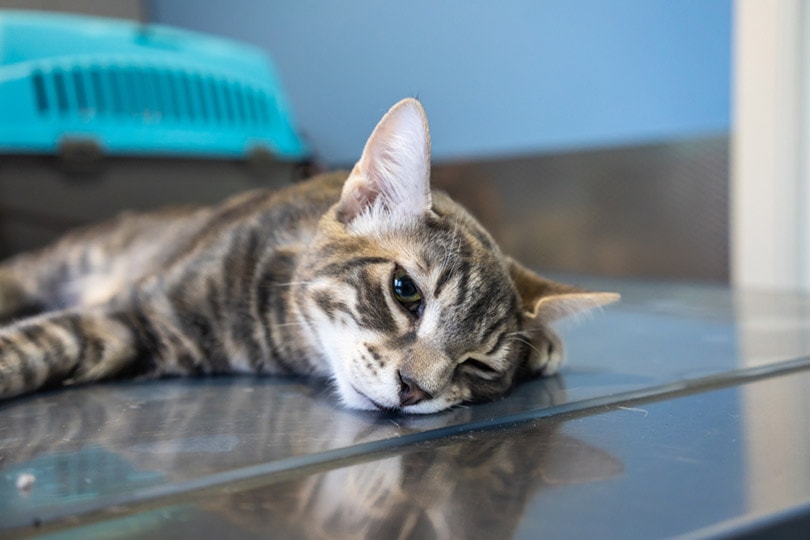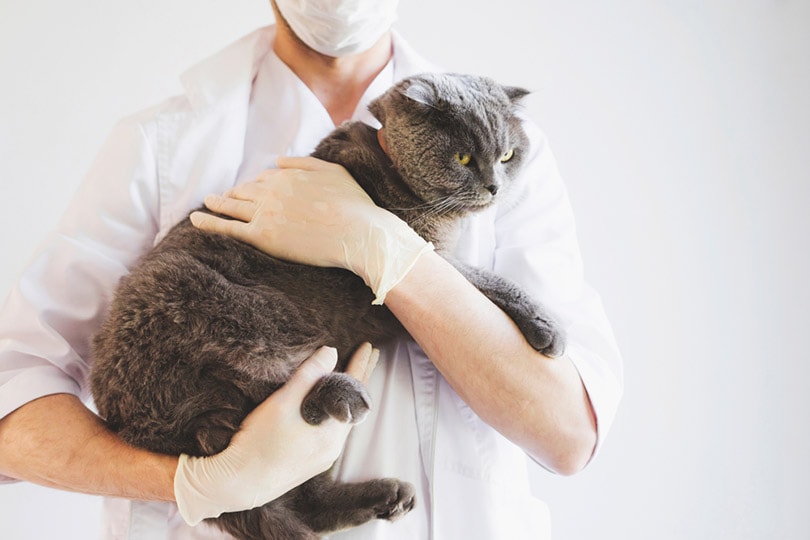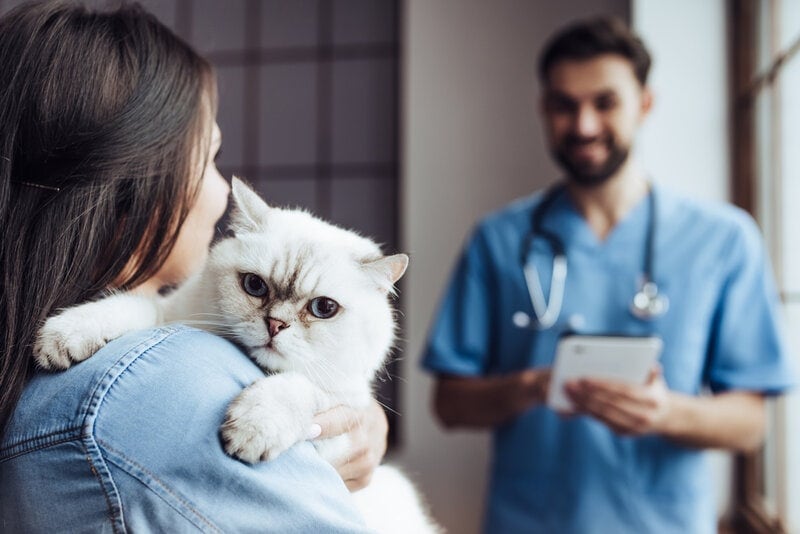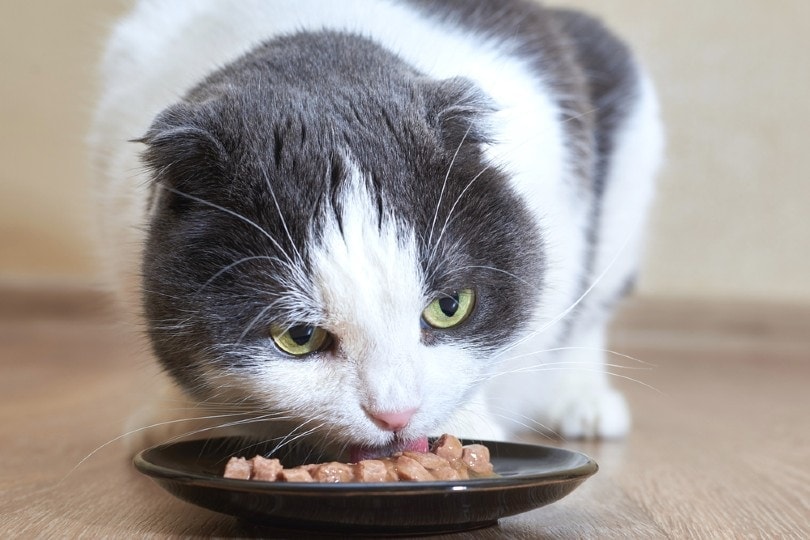How Do Vets Put Cats Down? Learning from the Experts (Vet Answer)
Updated on

Keeping a pet is a joy and brings many massive positives to many lives, but it is a serious and long-term commitment. You as the owner are taking on the responsibility of caring for your animal, providing for their needs and welfare. To quote a phrase from many human marriage ceremonies, looking after a pet also means caring for them “in sickness and in health.”
Unfortunately, our pets do become unwell, and their welfare can suffer despite your best efforts and intentions. With the help of a good veterinarian, we can deal with many of these problems and keep many issues at bay, but there may come a time when your pet is suffering, and their quality of life is not good. This is a sad but unavoidable fact of life when looking after animals and carries no blame or fault.
At this point, often the kindest act of care we can give that animal is to “put them down,” “put them to sleep,” or administer humane euthanasia. In this article, we will explore this difficult but vitally important topic.
Euthanasia Comes From Kindness
It is widely believed that the hardest part of a veterinarian’s job is to put animals down. There is no denying that it is a difficult task, emotionally and mentally, but in my personal experience, this is far more to do with human compassion towards the grieving owner, rather than the animal. Veterinarians only euthanize animals when they genuinely believe it is the best course of action for that animal and it is the only way left to relieve pain and suffering, and this is agreed with the owner. This means that the act of euthanasia, while always a sad experience, should carry no guilt or regret for either party. It is not an inherently bad thing and may be the only option left to protect the welfare of that animal.
Veterinarians are in a rare and privileged position where this is an option to relieve suffering – and this is not taken lightly.
Quality of life, or expected future quality of life, is an important decision-making tool for veterinarians when considering euthanasia. If your pet is having more bad days than good days, it may be that their quality of life is suffering. Your veterinarian will help and support you through these situations, giving you professional advice at every stage. When animals suffer, they are not able to foresee that there might be a time when they are not in pain – they just get on with life as best they can and “struggle on.”

Plan for the Inevitable
It is a cliché, but if euthanasia is being considered, it is “best to do it a day too early than a day too late” – as your pet may deteriorate and their quality of life may worsen dramatically at any stage. It is these “too late” situations that cause owners the most distress when euthanasia does come, in my experience. If your pet is elderly or poorly, it is entirely reasonable and sensible to plan ahead and make preparations for managing end of life, including preparing yourself for this option.
Of course, loss and grief are awful emotions to deal with and this is the hardest part of euthanasia for both owner and veterinarian. Everyone comes to terms with these challenges differently. It is worth pointing out that the pain of losing a pet, often a member of the family, is well recognized and there are lots of resources out there to help you. You are not alone.
How Is Euthanasia Performed in Cats? How Are Cats Put Down or Put To Sleep?
Having discussed the ethics of the decision, we shall now discuss the procedure itself. Every veterinarian will have their own approach to this procedure, looking after both the cat and the owner as best they can. Most veterinarians will explain what they are going to do, ahead of time, so that you know what to expect. The approach chosen may depend on your cat’s exact circumstances, especially if they have been unwell.
The key element of the procedure is to administer a significant overdose of an anesthetic agent called pentobarbitone into the bloodstream. This causes the entire body to shut down quickly and stops the heart from beating. Animals tend to pass away very peacefully and quickly. Pentobarbitone can be administered via an intravenous cannula (an IV line), or into major organs such as the kidneys and heart. Cats are less tolerant of handling and medical interventions than dogs, and so many veterinarians chose to sedate cats first using a sedative injection – this is recommended. Sedation is essential before injection into any organs but may also be helpful before the IV line is placed to make it more straightforward for both your cat and the veterinary staff.
After the administration of the pentobarbitone, your veterinarian will confirm that your cat has passed by listening to the chest and checking reflexes.

Trust Your Vet
Your veterinarian will do everything within their power to make this process as peaceful and simple as they can for your cat and for you. That said, like any procedure, sometimes things do not go perfectly. As the body shuts down, some cats may have reflex jerk or twitch movements, may go to the toilet, or gasp. This is not because they are in pain, but a natural response of nerves that are shutting down.
It is also worth noting that a cat’s eyes do not close after death – this is Hollywood rather than reality. Some cats may need an extra top-up of anesthetic, especially if their circulation has been poor or they have been particularly unwell. Rest assured, whatever happens, your veterinarian will correct it as quickly as possible, and you should give them the space to do this as your cat’s welfare will always come first.
At the Very End
The decision to be with your cat for the final injection or to leave the cat with the veterinarian is entirely up to you. There are many sources pressuring owners to stay, but inevitably the procedure is not a nice one to watch, even if it goes perfectly. In many cases, your cat will either be sedated or unwell, and they will not be totally aware of your presence. If you are (understandably) upset, you might pass this stress on to the cat. If you want to be there, that is entirely reasonable, but it is also right for you not to watch if this is better for your wellbeing.
Your veterinarian will perform the same procedure whether you are there or not, and your cat’s welfare will always be paramount. Please don’t feel under any pressure and make the decision that is right for you.

How Long Does It Take To Euthanize a Cat?
If the cat is to be sedated first, this usually takes 5-15 minutes to kick in after the injection, so that your cat is fully asleep, not stressed, and not aware of any further procedures. Once the veterinarian administers the final anesthetic agent, most cats will pass away within a minute or two – although it can often be faster than this (within seconds).
What Does It Feel Like When a Cat Is Euthanized?
Many cats will already be asleep under sedation prior to their euthanasia. This is often the best approach and kindest situation for the cat so that any further handling or IV cannula placement does not upset them. This means they will not be aware of euthanasia and will just not wake up from their slumber. For those that are not sedated, they will likely have a strong feeling of drowsiness and sleepiness, just like a person might have at the start of a general anesthetic given at a hospital, before losing consciousness. The drug does not usually cause any pain, distress, or “freaking out” if given correctly – cats simply become heavy in your hands and go to sleep.
Do Cats Feel Pain When They Are Euthanized?
In most cases, the act of euthanasia itself should not and will not cause any pain. The act of administering a sedative via a needle injection, or placing an IV line, both carry the “sharp scratch” initial discomfort – this is usually the worst part of the procedure for the cat, but it is over quickly and rapidly replaced by sleepiness.
Pentobarbitone can be painful if it leaks out of a vein during the injection. This is the only situation in which it could cause pain and does not happen very often. In sedated cats, even this will not cause a problem.

Conclusion
Caring for your pet through ill health is a key responsibility of any pet owner, and unfortunately, there may come a time when the only option left to protect the welfare of your cat is to consider putting them to sleep or euthanizing them. This should not be feared but seen as the last kindness you and your veterinarian can give them – a dignified and controlled way out of suffering. It is best to plan and prepare for this eventuality, and your veterinarian will professionally discuss it fully with you to give you the best advice and guidance possible. Euthanasia is performed through an overdose of an anesthetic agent which causes your cat to fall asleep and not wake up. It is not painful and is usually over very quickly and peacefully. Losing a pet can be awful and cause intense grief – you are not alone in this and there is much support available to you.
Featured Image Credit: GaiBru Photo, Shutterstock













